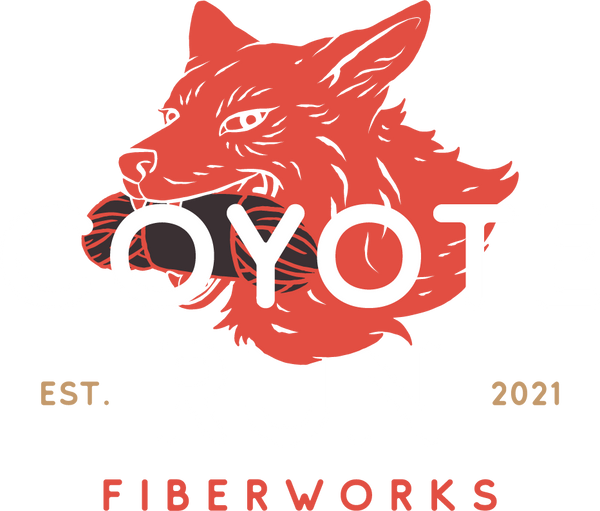THE MILL
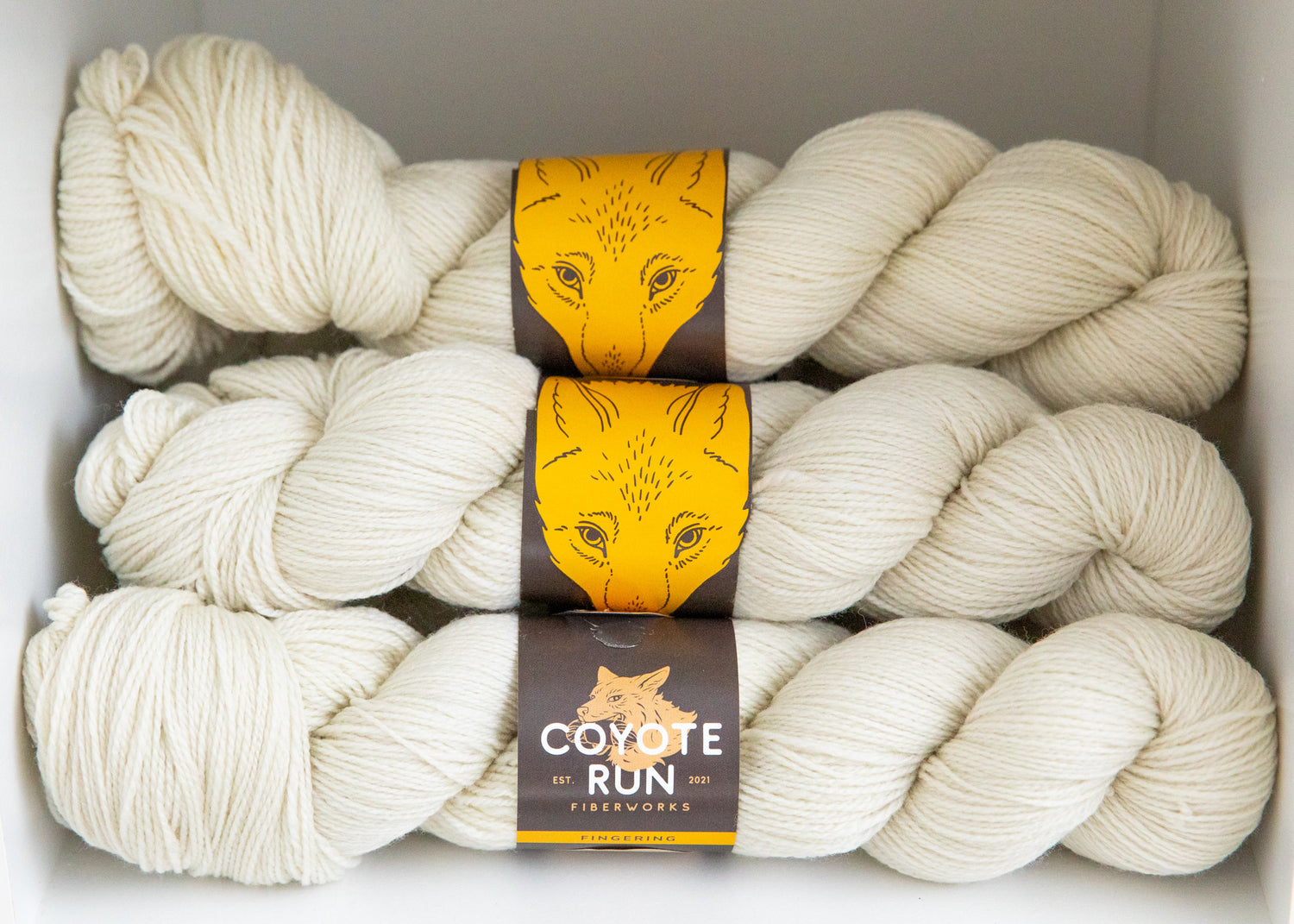
HOW WE MAKE YARN
Making yarn from raw wool is a long, labor-intensive process. Our equipment significantly reduces the labor required to process a fleece by hand. And it’s REALLY FUN! The heady smell of raw wool, the hum of the equipment, the shimmer and fluff of beautiful fibers ready for your crafty hands . . . it’s all so inviting! Seriously—come for a visit, we’ll put you to work, and you’ll be HOOKED. Making yarn is magical!
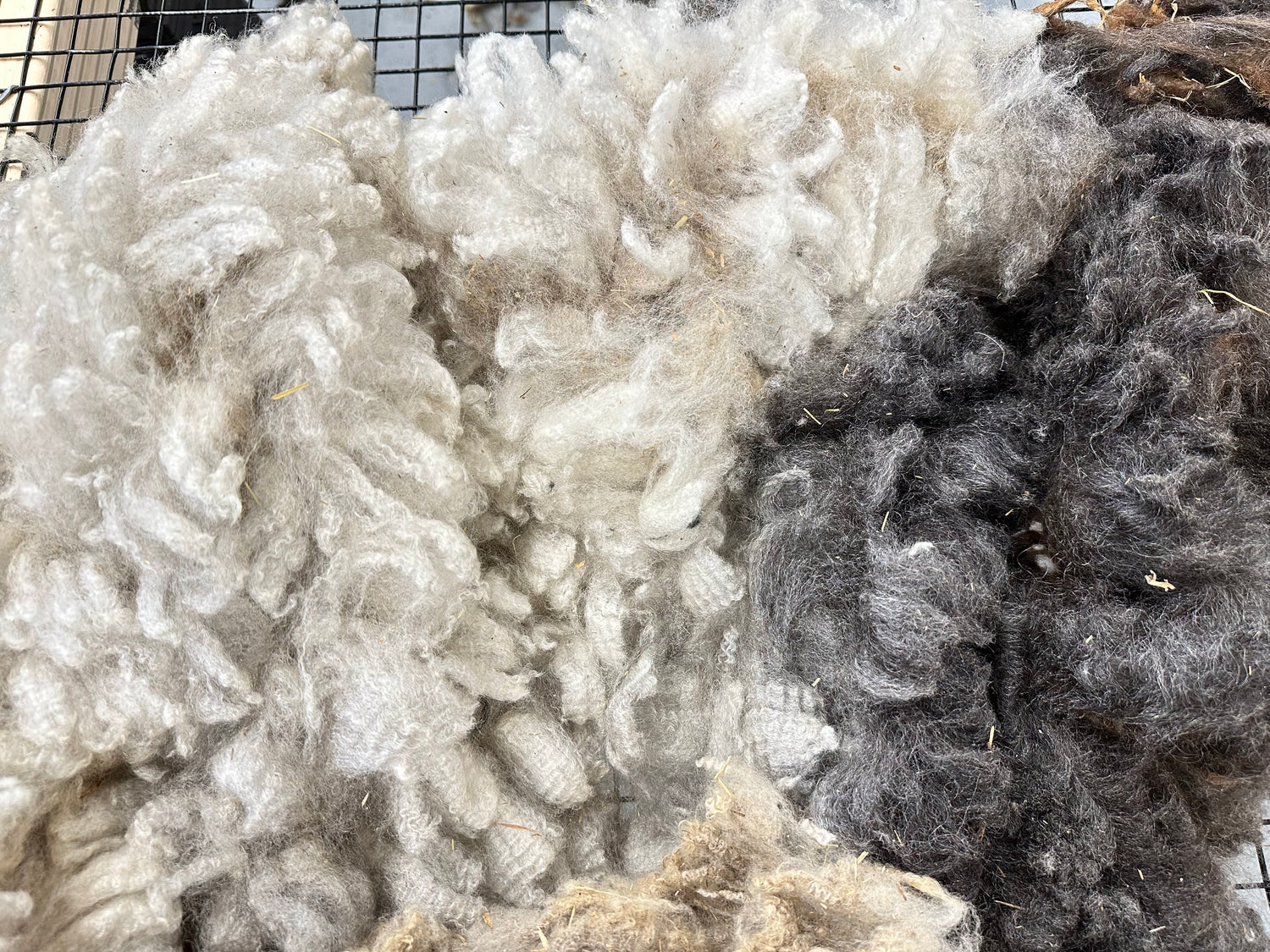
SKIRTING
Skirting is the process of taking a fleece straight off the sheep and getting rid of the “icky” parts. Poo-covered butt, belly, and leg wool is removed from the coat. Large bits of VM (“vegetable matter”—grass, hay, sticks, burrs, etc.) are pulled out as well. The dirty “waste” wool can be composted or tilled directly into soil as a fertilizer.
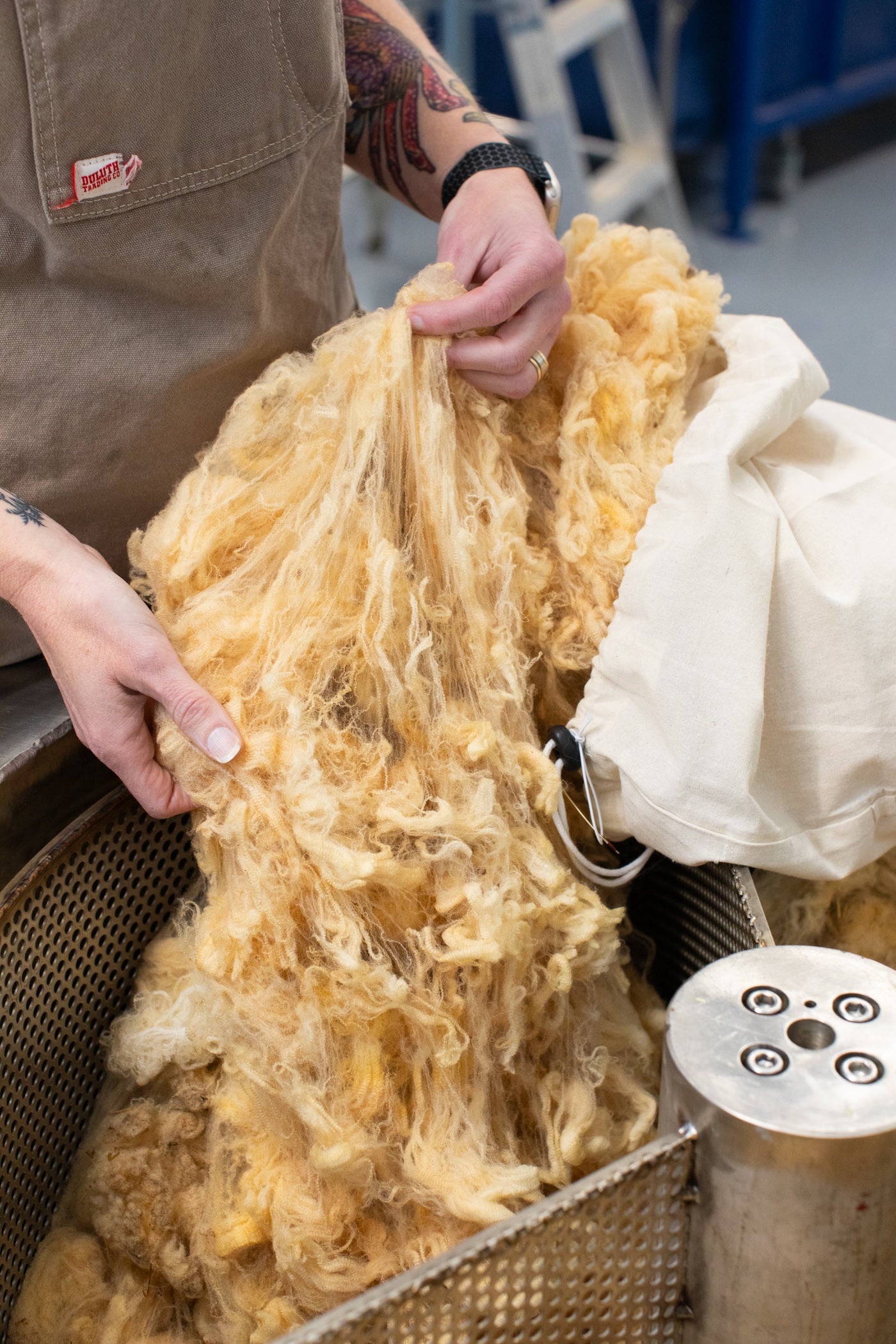
WASHING
Wool is GREASY. If you’ve ever touched raw fleece, you know. The wool feels heavy and a little sticky. Your fingers are a little slippery. That’s the wool grease, which contains lanolin, a waxy substance that sheds water to keep the sheep dry. It can be refined and is used in many personal care products. But it is NOT good for our equipment, so we remove as much of it as we can, along with other contaminants (dirt, urine, poo, etc.) using extremely hot water and a mild detergent. Raw wool is cleaned with a minimum of one forty-minute soak, four washes, and two rinse cycles before it is air dried on racks. Fine wool often requires additional washing.
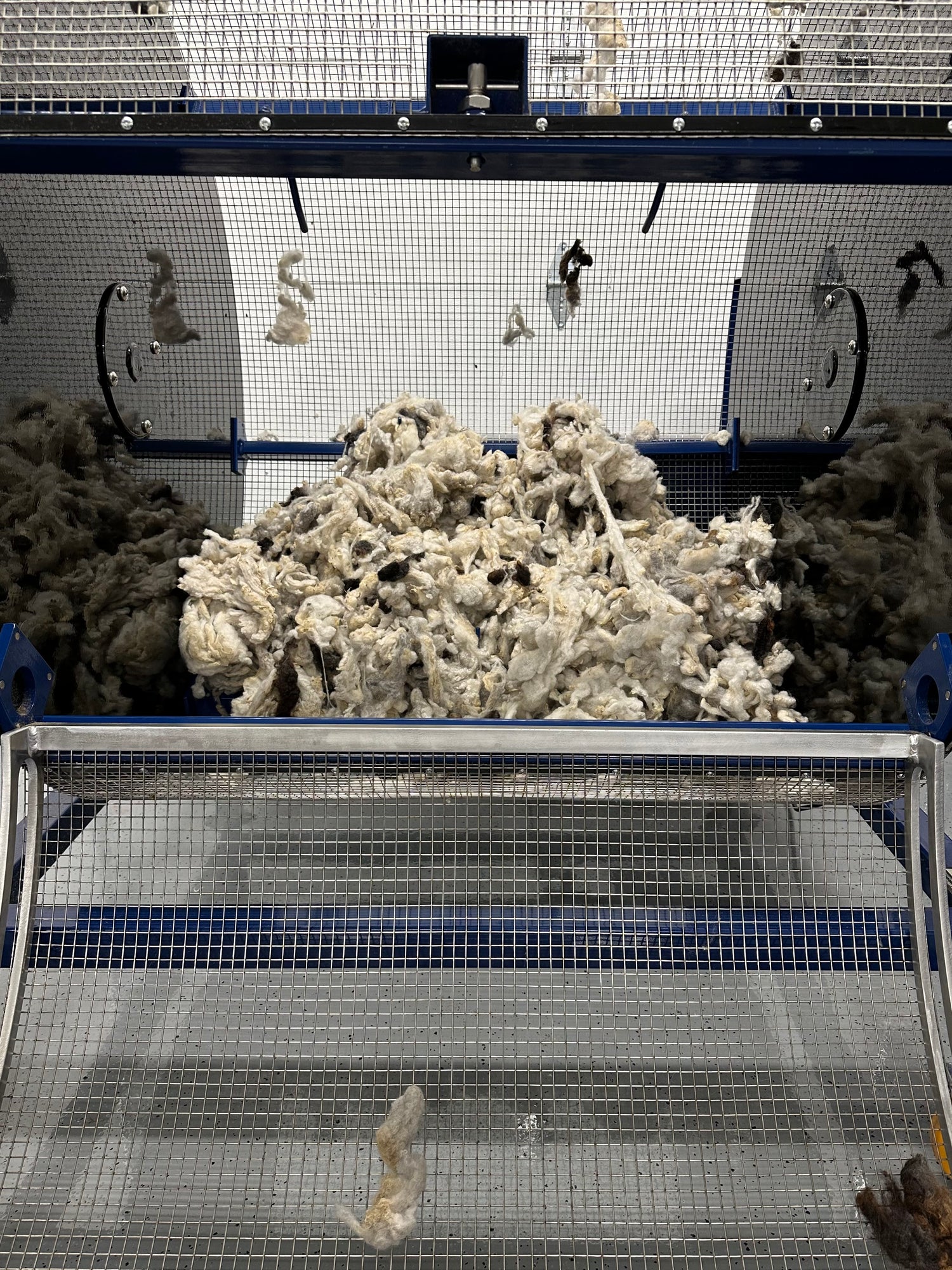
TUMBLING
We use a tumbler for fleeces that have a significant amount of VM. It’s a large rotating drum made of mesh: wool stays trapped within, and much of the grass, hay, leaves, sticks, etc. falls out. Large tines on the inside of the drum help to keep the fibers from bunching so that all parts of the fleece can be convinced to loosen their grip on lunch leftovers.

DYEING
We have two large vats dedicated to dyeing wool. We dye the clean fleece before it moves on to any other processing. This allows us to blend colors during the production of our yarn instead of dyeing the skeins after they are completed. We use very hot water, acid dyes, citric acid, and salts to achieve vibrant, colorfast hues. We then rinse the wool in clean water and lay it on racks to dry.
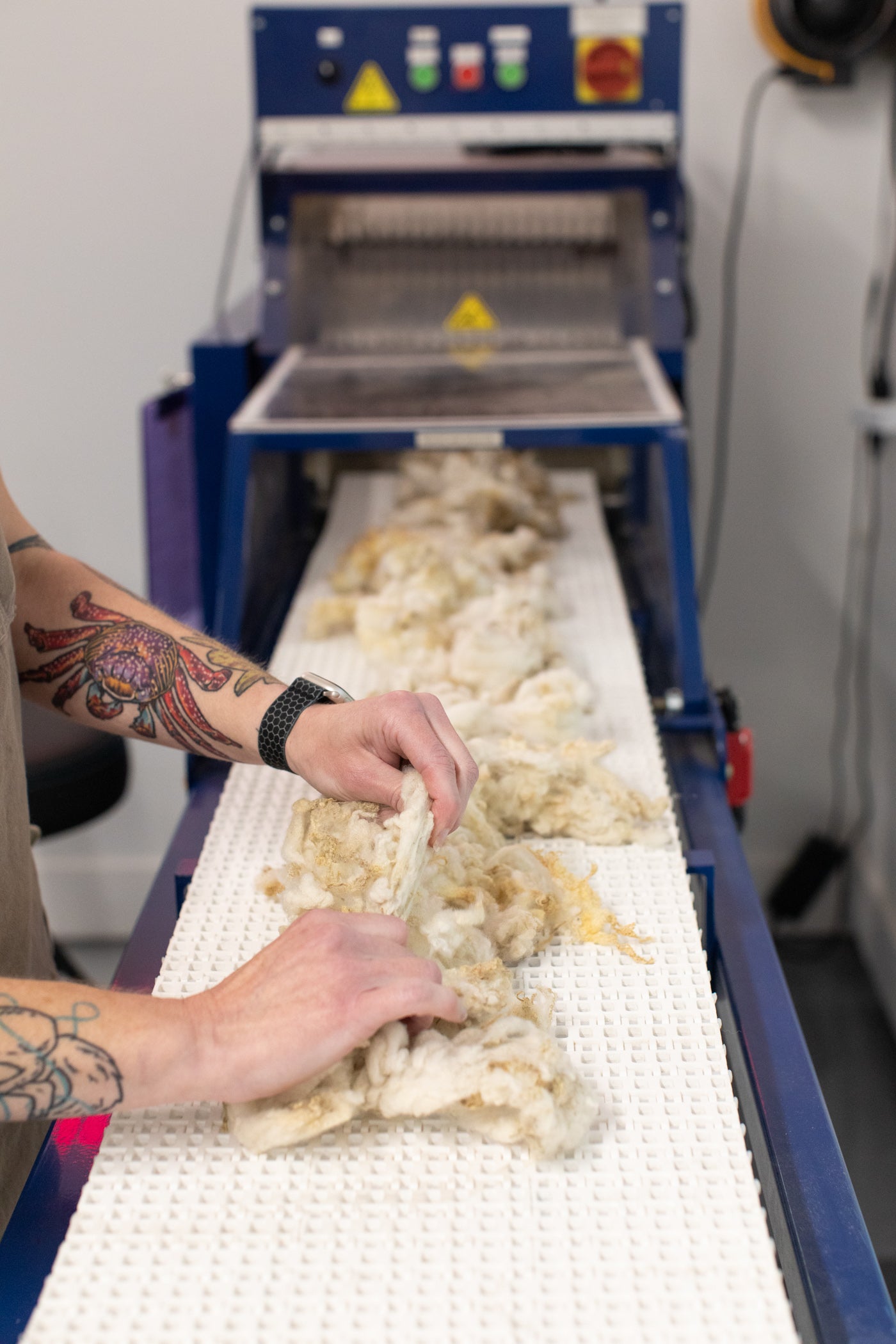
PICKING
Picking is the process of opening and separating the locks of wool in a fleece. The machine uses a conveyer belt to feed the wool to a large rotating drum covered in metal spikes a ’90s goth could appreciate. Wool tends to stick to itself, but bits of dirt, VM, or grease can keep it clumpy as well. The spinning drum of death gently teases the tufts apart and tosses them into a room designed to contain the fluff. We collect it in large carts and spray it with a small amount of conditioner to help manage static throughout the rest of the processing.
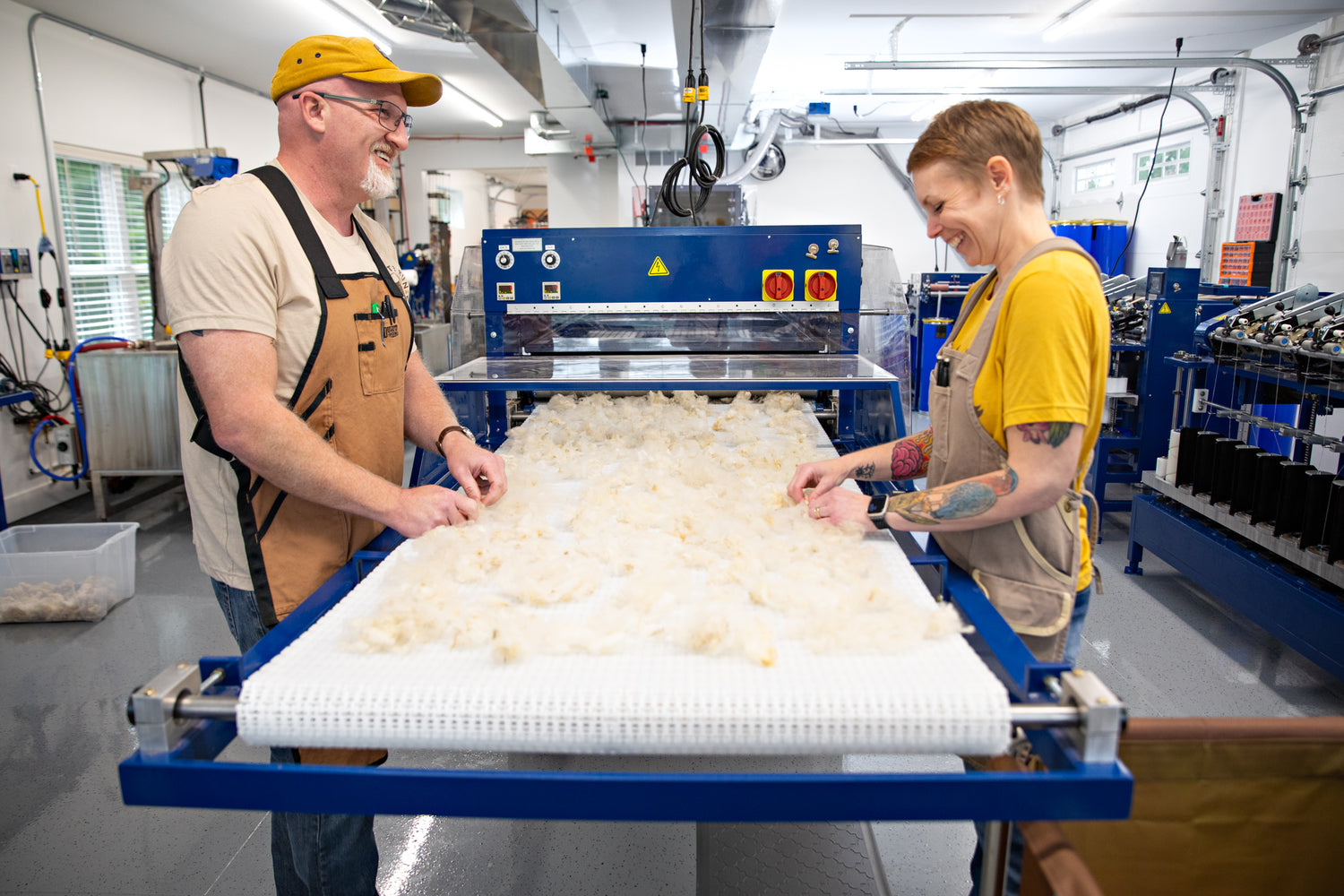
DEHAIRING / FIBER SEPARATION
The wool’s next stop is the dehairer. Also called a fiber separator, this machine is a magical beast. It removes probably 95% of the stuff we don’t want in our yarn. This includes pieces too short to spin, guard hairs, and almost all the remaining VM. It uses a series of toothed drums to separate the good (which is collected at the end in a beautiful cloud of cotton candy) from the bad (which is caged underneath).
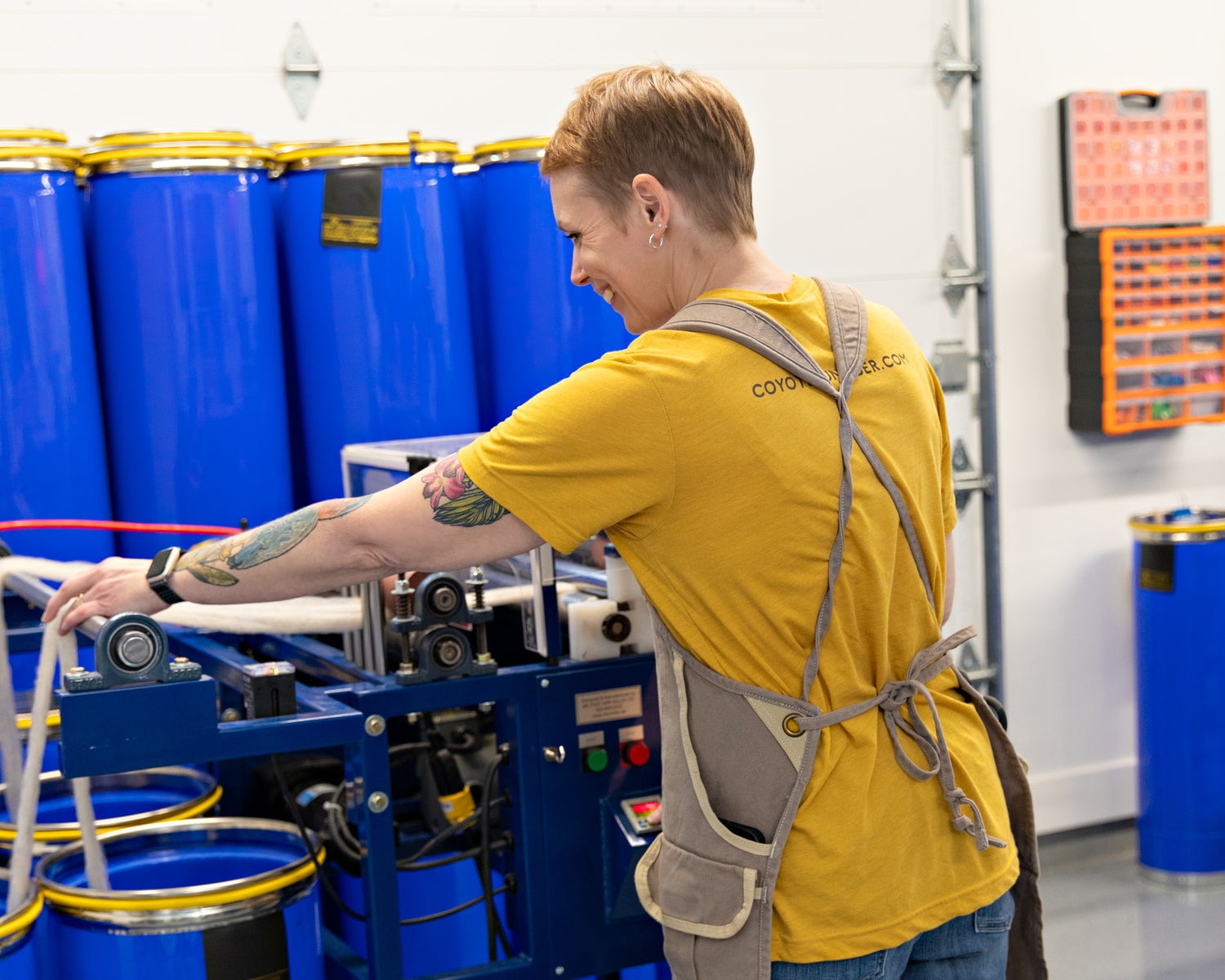
DRAW FRAME
The roving that comes out of the carder is too large to run directly on our spinners, so we use the draw frame to stretch the wool into longer, thinner strands and even out any inconsistencies.
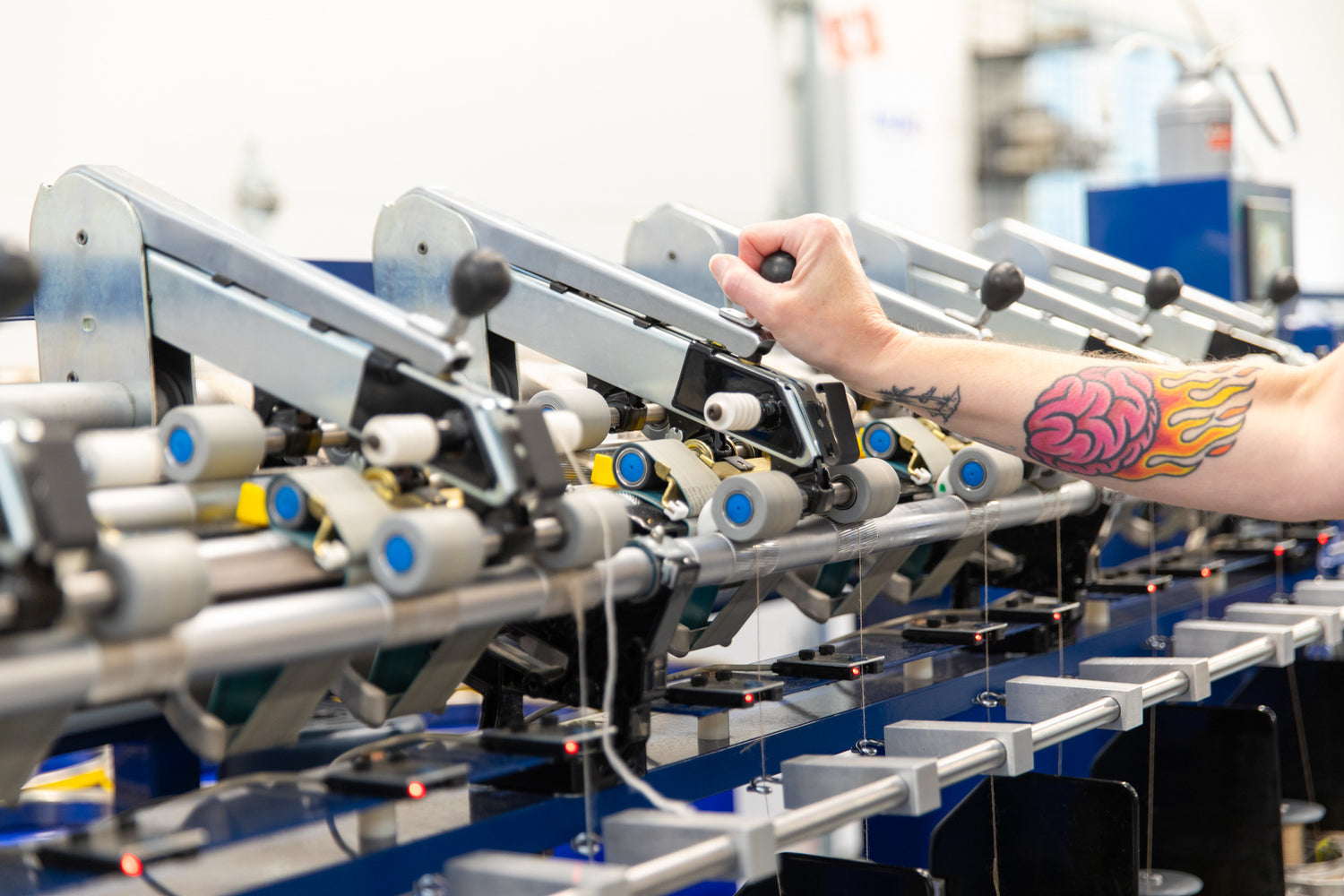
SPINNING AND PLYING
Spinning is the process of thinning and adding twist to roving to make it stronger. The roving from the draw frame is stretched out and fed slowly in thin strands to a spinner, where twist is added as the yarn (yes, finally, yarn!) is collected onto bobbins. Called singles at this point, the yarn may be complete, or it can be twisted together (plied) with two or more other singles to add strength, stability, and balance to the finished yarn.
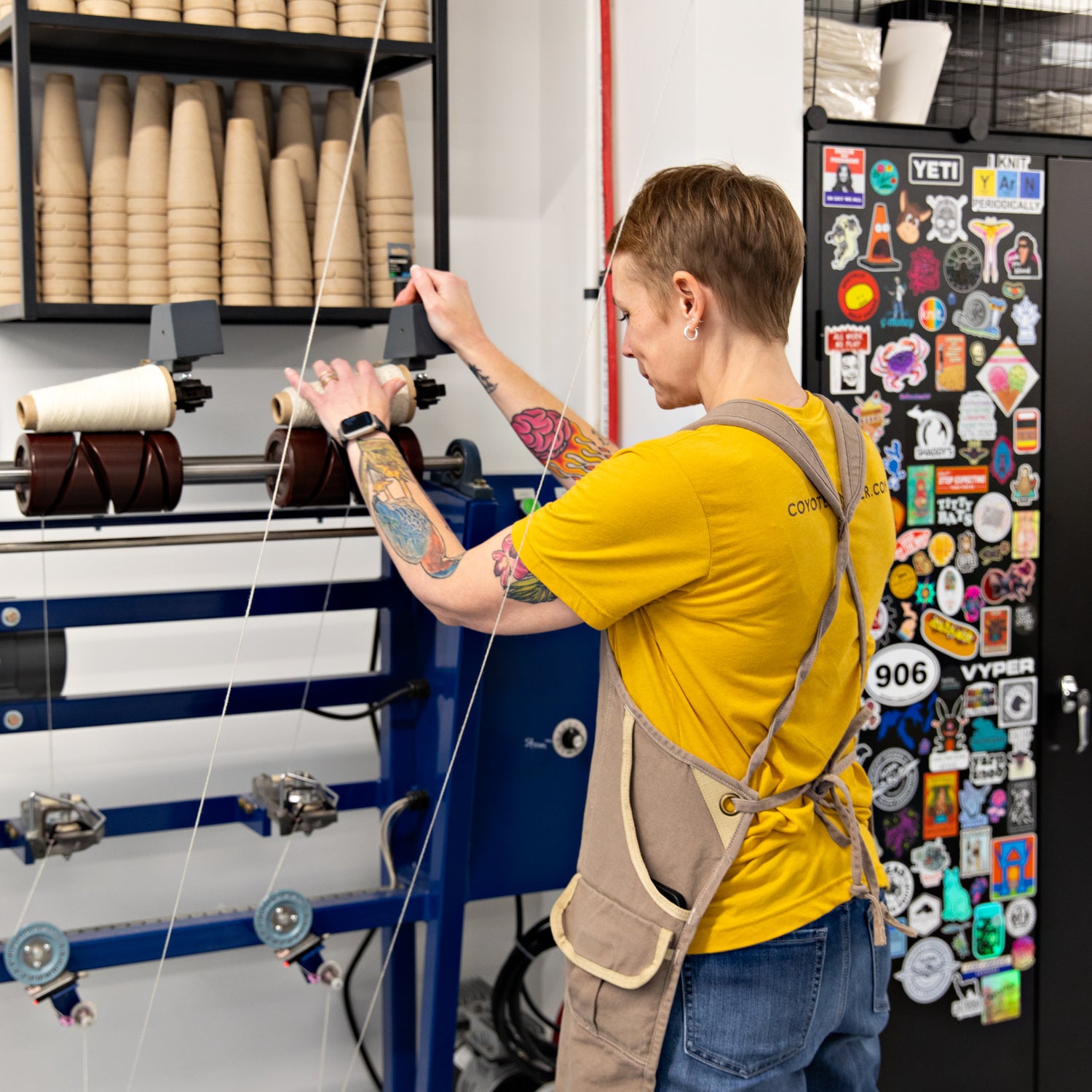
STEAMING
Once our yarn is complete, it is pulled through steam to set the twist. It also serves to revive and excite the fibers that have been subdued by tiny amounts of conditioner and spinning oils. The finished yarn is wound onto cones.
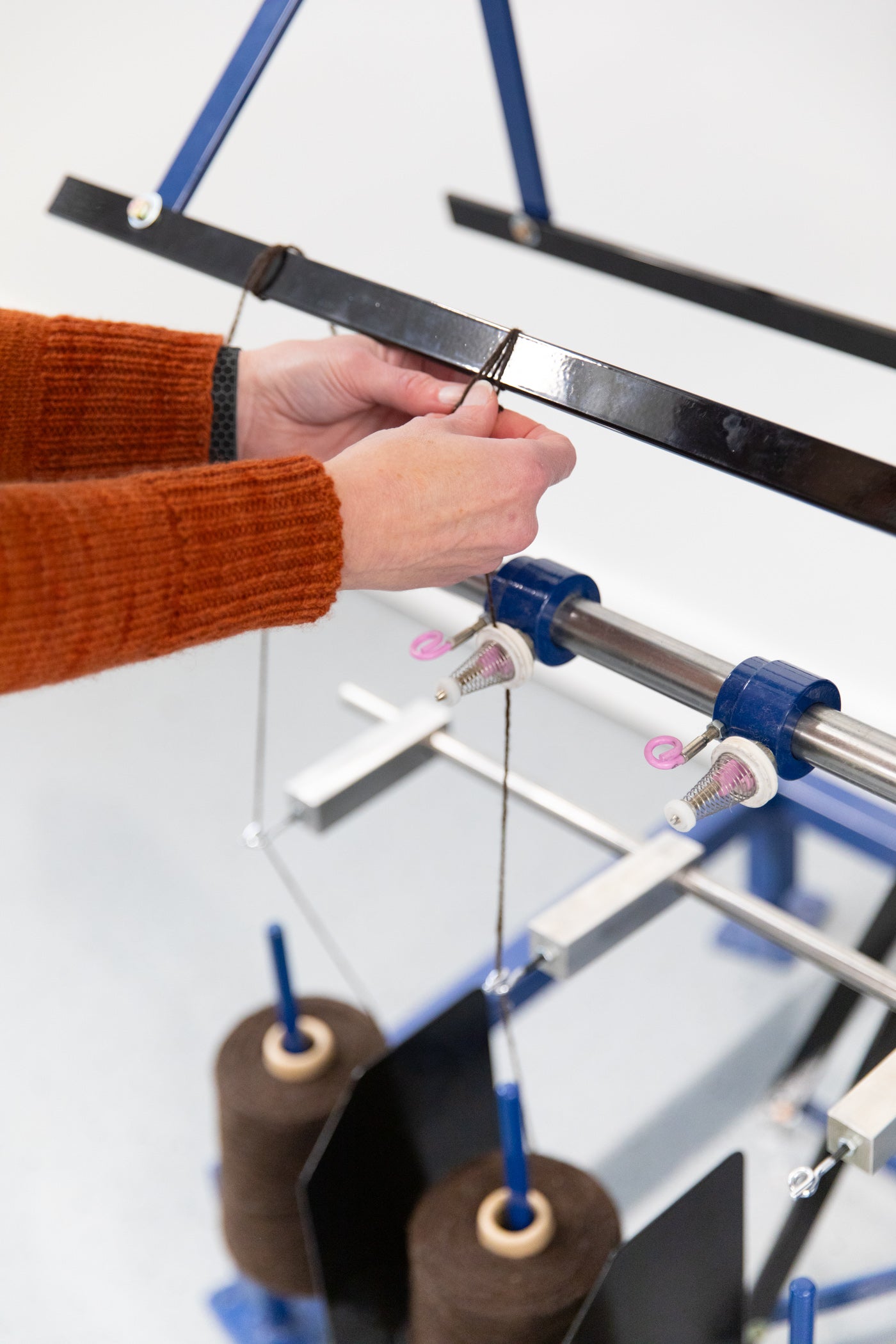
SKEINING
Coned yarn is wound into skeins for ease of display, shipping, and snorgling. A simple rotating frame measures the yarn into 1.5–2 yard diameter loops, called hanks or skeins. They are tied and twisted to keep them from tangling.
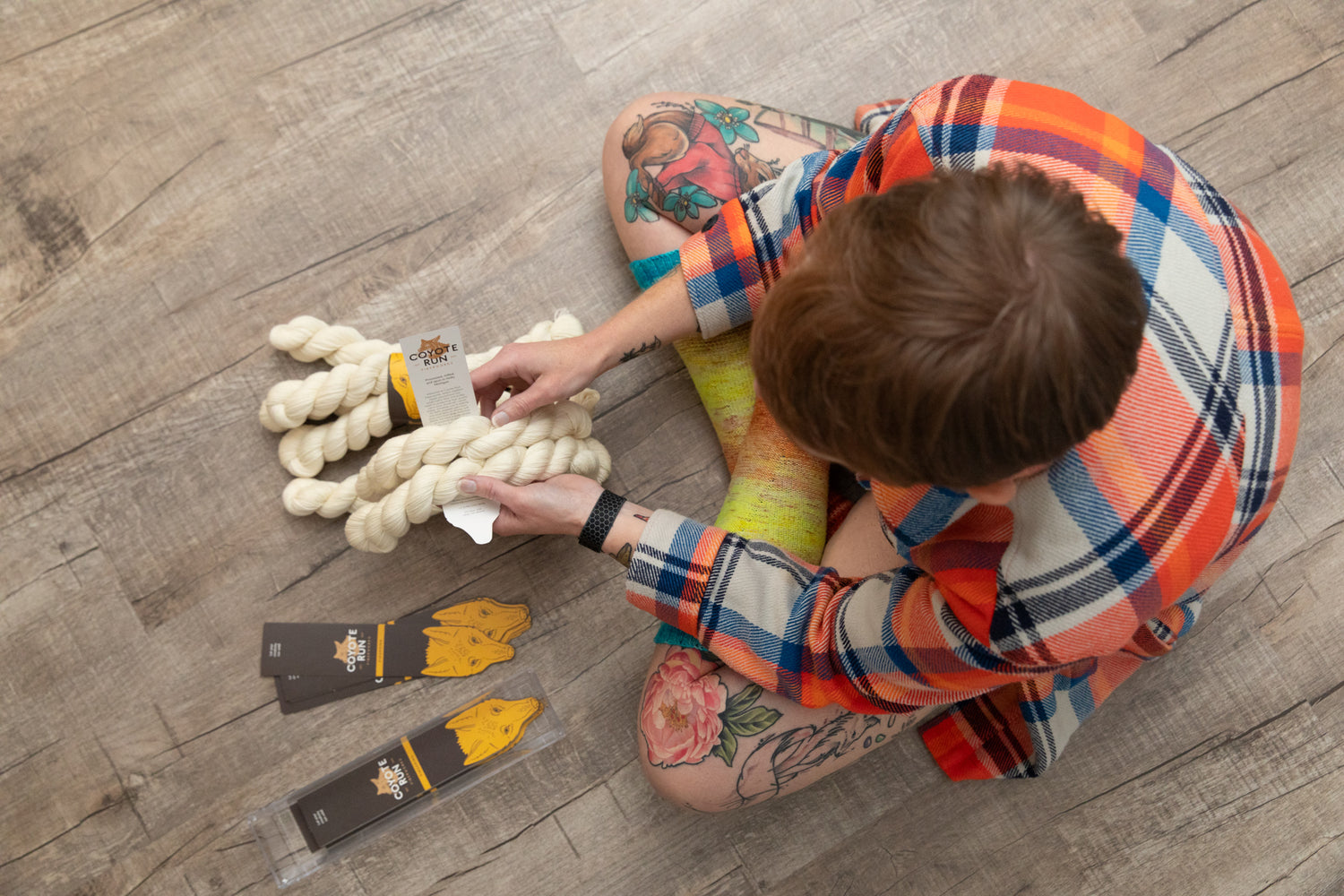
PACKAGING
Once the yarn is skeined and twisted, we slap one of our awesome labels on it and send it your way! Our labels are particularly awesome because we use the differently colored coyotes to designate the weight of yarn.
Yellow = Fingering Weight
Red = Sport Weight
Dark Teal = DK Weight
Aqua = Worsted Weight
Light Brown = Everything Else! (Lace, Aran, Bulky, or Super Bulky Weight)
